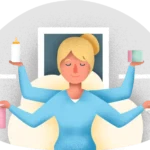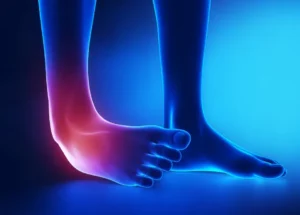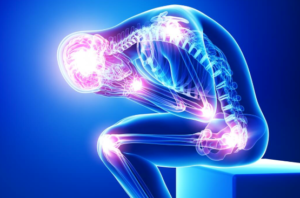Arthritis is a condition characterized by inflammation in the joints, resulting in pain, stiffness, and swelling. Arthritis pain stems from the wearing down of cartilage, the protective tissue that cushions the ends of bones within a joint. As cartilage diminishes, bones can rub against each other, causing pain that may range from a mild, dull ache to a severe, sharp sensation. Managing this pain is a key aspect of living with arthritis, and certain lifestyle adjustments can be beneficial. Here’s information on different methods for managing arthritis pain at home:
Physical Therapy
For individuals experiencing persistent arthritis pain, a healthcare provider may recommend a comprehensive pain management plan. This type of plan is a coordinated approach that addresses the physical and emotional aspects of discomfort. It often involves multiple specialists and treatments tailored to an individual’s specific condition and needs.
Managing Chronic Pain
A central component of managing arthritis is understanding chronic pain. Unlike acute pain that signals a recent injury, chronic pain is persistent, lasting for weeks, months, or even years. Symptoms of chronic arthritis pain include:
- Aches: Which may be constant or more intermittent.
- Stiffness: This is particularly noticeable in the morning or after periods of inactivity.
- Pain: Pain may feel sharp with movement or dull when at rest, sometimes accompanied by burning or grating sensations.
- Swollen Joint: Swelling and tenderness around the affected area.
Adding Low-Impact Physical Activities At Home
Gentle physical activity also plays a fundamental role in managing arthritis symptoms, and you can implement your physical therapy techniques at home to help manage your pain. Low-impact exercises help maintain joint flexibility, strengthen supporting muscles, and improve overall function without placing excessive strain on the joints. Activities like yoga help enhance your range of motion and reduce stiffness through slow, controlled movements and poses.
Regular stretching helps keep muscles and surrounding tissues flexible, which may help to alleviate joint pressure. Here are some tips on adding more low-impact activity to your routine:
- Start With Gentle Warm-Ups: Prepare your joints and muscles with light warm-up exercises such as stretching or slow, controlled movements. This step enhances blood flow and reduces stiffness, minimizing the risk of injury.
- Focus On Low-Impact Exercises: Incorporate low-impact activities like seated leg lifts, gentle yoga poses, or tendon glide exercises. These movements improve joint mobility, build strength, and reduce strain.
- Use Proper Form and Technique: Follow precise techniques demonstrated by your therapist or instructional videos. Avoid overexertion and listen to your body.
- Maintain Regularity: Consistency is key. Perform physical therapy exercises on a routine that aligns with your pain patterns and energy levels. Even short sessions can yield significant benefits over time.
- Monitor Progress and Adjust: Keep track of your progress, and periodically consult your therapist to modify or advance your regimen.
Physical therapy at home empowers you to take an active role in managing your arthritis. By integrating these strategies into your daily routine, you’ll likely notice improvements in flexibility, strength, and overall joint health.
Occupational Therapy
Occupational therapy focuses on helping individuals perform daily activities with greater ease. Part of this approach involves learning how to manage flare-ups at home. Simple, self-directed methods may provide temporary relief and improve joint function during periods of increased pain and inflammation.
Applying ice packs to an inflamed joint can help reduce swelling and numb the area, providing temporary pain relief. Another established approach is the RICE method, which stands for: Rest, Ice, Compression, and Elevation. This involves resting the affected joint, applying a cold pack for 15-20 minutes at a time, using a compression bandage to minimize swelling, and elevating the limb above heart level.
Medication Management
While over-the-counter pain relievers can offer temporary relief, they may not be sufficient for managing long-term or severe arthritis pain. You should schedule a visit with a specialist, like a rheumatologist or an orthopedic surgeon, if you experience persistent pain that does not improve with self-care, if symptoms begin to interfere with your daily life, or if you notice significant changes in joint function or appearance. A specialist can provide an accurate diagnosis and develop a more targeted treatment plan. Prescription medications, like corticosteroids and DMARDs, may be recommended for those with more severe pain symptoms.
Learn More About Arthritis Pain
Living with arthritis requires a proactive approach to managing symptoms. By collaborating with healthcare providers and implementing targeted lifestyle modifications, you can develop effective strategies to manage joint pain. Consulting with medical professionals can provide further guidance and personalized recommendations for managing your specific condition. Contact a provider today for more information.















